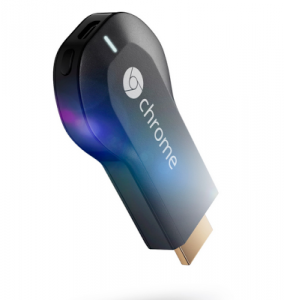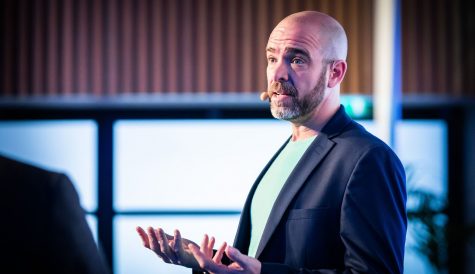
After more than 40 years of operation, DTVE is closing its doors and our website will no longer be updated daily. Thank you for all of your support.
Google confirms plan for second generation Chromecast
 Google’s vice-president of product management Mario Queiroz has confirmed that the internet giant is to launch a new version of its popular Chromecast HDMI dongle.
Google’s vice-president of product management Mario Queiroz has confirmed that the internet giant is to launch a new version of its popular Chromecast HDMI dongle.
Speaking at Gigaom’s Structure Connect conference in the US, Queiroz said that Google is building an “ecosystem of different endpoints” with version two of Chromecast seen as one of a spectrum of endpoints that will include other Chromecast devices.
While giving few details of what Google has in mind, Queiroz said that the more advanced hardware capabilities of the new version of the devices will give users “a better opportunity to take full advantage of a large screen paired with a small screen”.
“I’m not going to tell you the feature set of Chromecast v2 but we want to bring the richness of this first screen-second screen experience to life,” he said.
He said Google had been “very happy with how fast Chromecast has gotten out to consumers”, but especially with how much consumers had used it and how many apps had been developed for the platform.
Queiroz said that Chromecast was an implementation of Google Cast. Google Cast-ready apps allow content to be brought to the TV via second screens, and a big part of Google’s strategy is to enable new experiences to be brought to the TV, he said.
A new feature, Backdrop, gives the user the ability to customize the screen when it is not being used with personal photos, art and news and lifestyle content. “You can have this beautiful digital picture frame in the home,” he said. New data can be added to Backdrop over time. Queiroz said Google’s intent was to grow the number of sources or feeds of content that can be displayed.
“Developers can present complementary information on the second screen,” he said. Queiroz said this could be opened out to developers, as Chromecast had been opened out via an SDK made available earlier this year.
Queiroz said “every TV with broadband is an opportunity to connect that TV”. Chromecast is the “easiest and richest” way to bring content to the TV, he said. “Your experience in the living room is an extension of your mobile experience.” However, Android TV and the Nexus Player are a complementary approach.
Queiroz told attendees at the Gigaom event that Chromecast users had now ‘cast’ from their second screen devices 650 million times, while over 6,000 app developers had built or were building over 10,000 apps for the Google cast ecosystem.
Queiroz said that Chromecast and the new Android TV platform would both have a place in Google’s TV strategy.
“The beauty is that any apps that work with Chromecast, the same interaction model will work with [Android] devices,” said Queiroz.
Google Cast apps take advantage of the second screen to different extents, he said. Devices with different hardware capabilities would enable viewers to have a richer experience, he added.
Queiroz said other devices will be launched and Google would work to embed Chromecast functionality into OEM partners’ devices.


